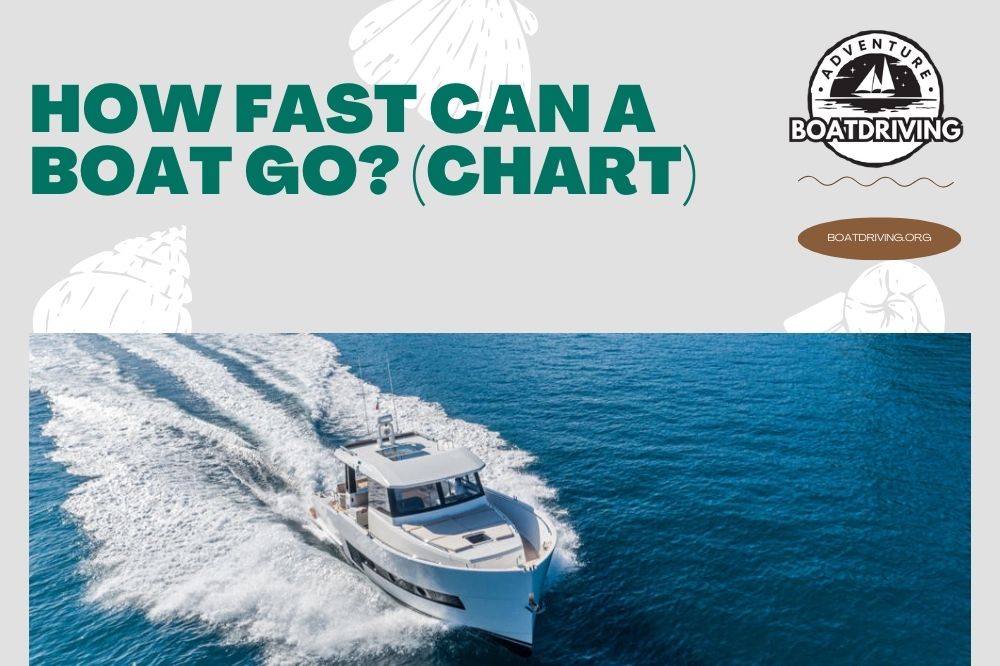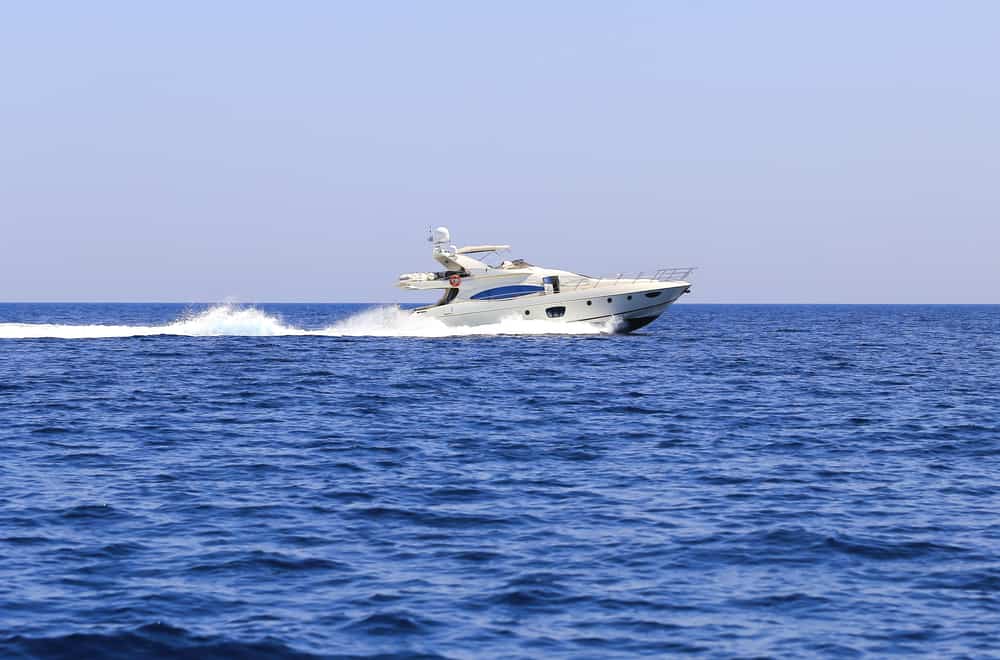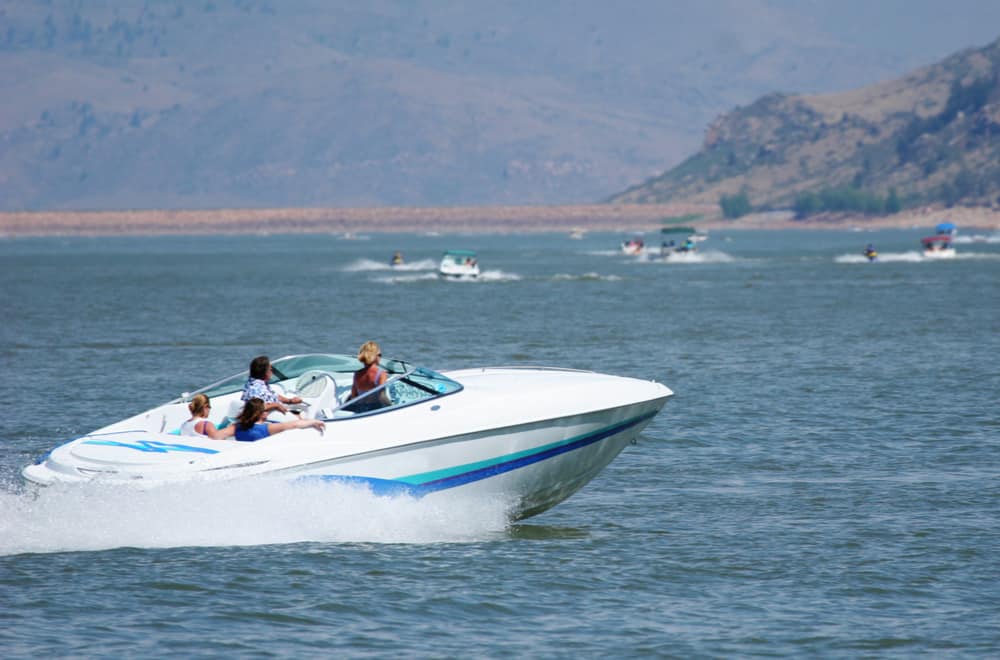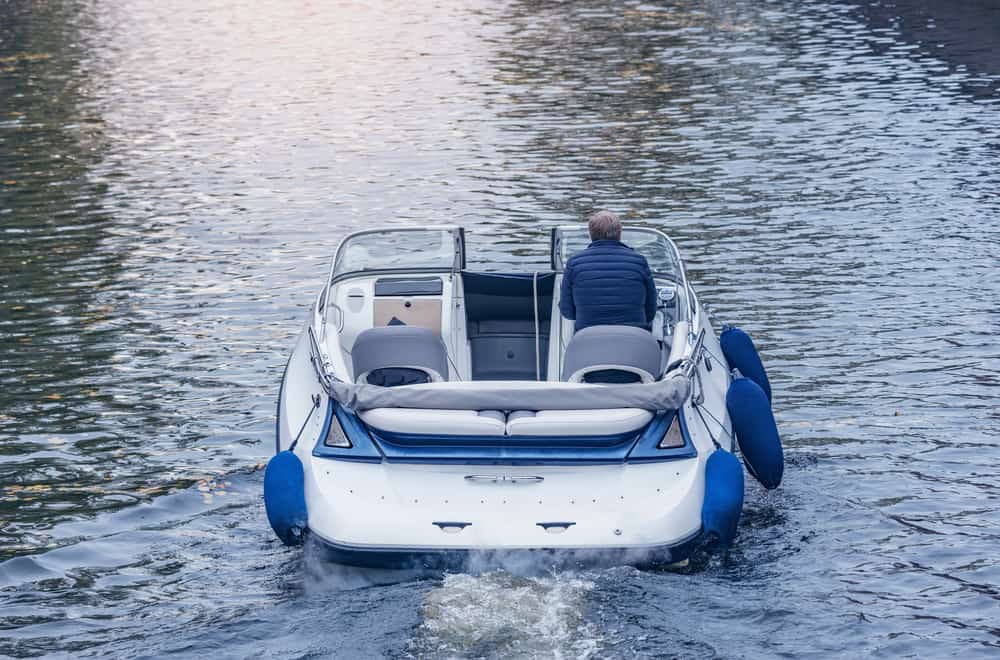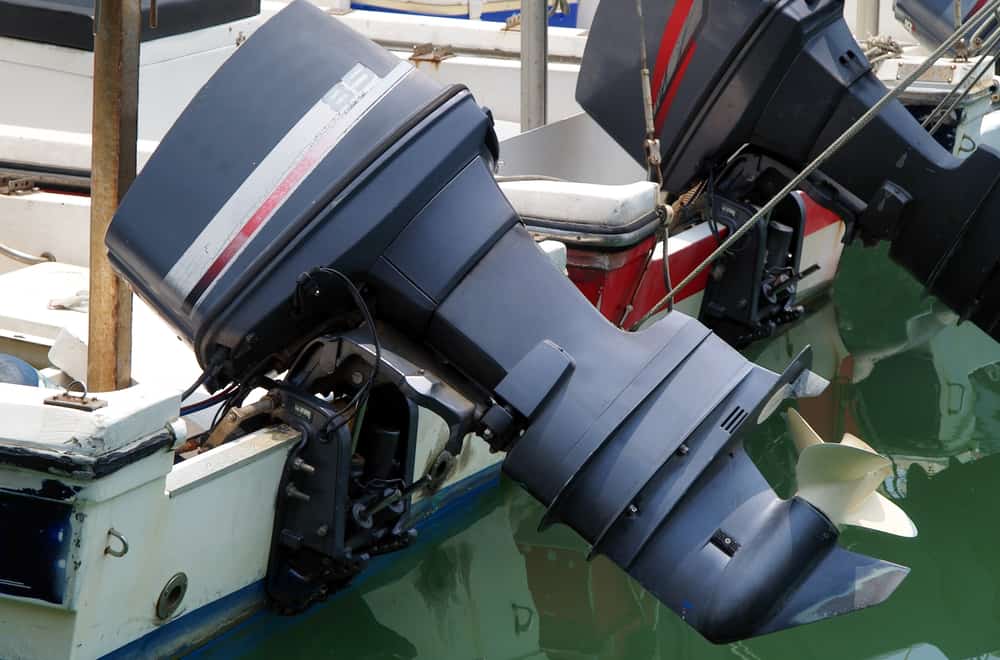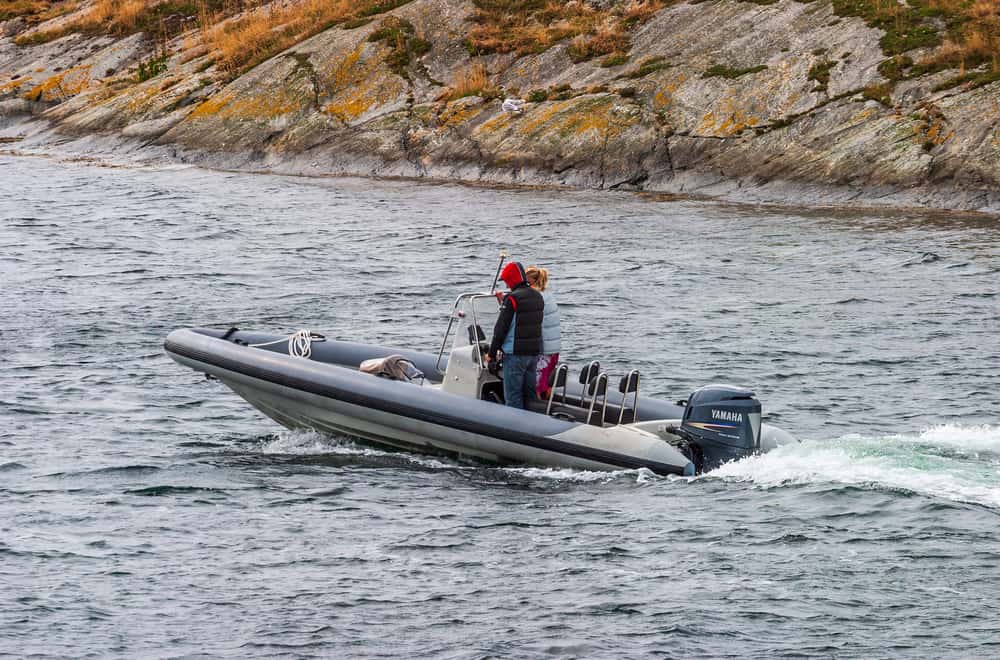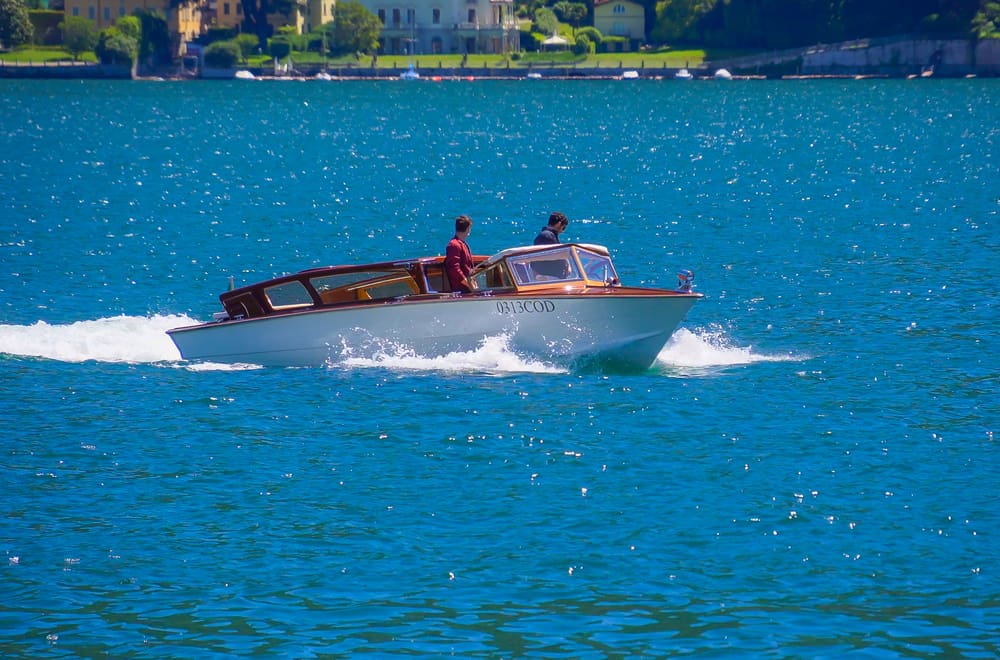Many people talk of how motorcycles, cars, trains, and planes go fast. But did you know there’s much fun when you know about boat speeds? Do you ever ask yourself how fast the boat you are using can go?
Well, it’s time to get some answers. Here, we’ll respond to the common query, how fast can a boat go?
Like cars or trains, many factors affect how fast your water vessel can move. Some people love using boats to move at a slow pace. It’s when you’ll use the craft to sail or kayak.
When you love to go fast, you’d want to know a boat’s top speed. So, let’s start with the average speeds of vessels.
Table of Contents
Basic Average Speed for Boats
The average speed for all boats will vary with the vessel you choose. As long as your boat uses a motor, expect it to go fast. Also, the sailboats move fast but not like the powerboats.
Today, the fastest boat is the Spirit of Australia. It set the record of 345 mph in 1978.
This vessel is a custom type with jet engines instead of propellers. So, don’t expect it to represent the average speeds of most crafts.
Many people love to use recreational boats like sails and pontoons. These vessels move at speeds of 10 to 40 mph.
If you’d love to use a speed boat, expect to get one that hits a top speed of 100 mph. That’s way much faster than the recreational crafts.
So, below is a chart of the average and top speeds of different boats. It will help you pick the best vessel, especially when you love to speed.
| Type of Craft | Average speed in mph | Top speed in mph |
| Sails | 8 | 12 |
| Pontoons | 22 | 41 |
| Decks | 34 | 57 |
| Yachts | 50 | 80 |
| Jetboat | 30 | 50 |
| Personal Watercrafts | 50 | 70 |
| Cruisers | 23 | 50 |
| Jet Ski Boats | 40 | 50 |
| Jon Boats | 25 | 45 |
| Racing Boats | 70 | 100 |
Looking at this chart, you’ll see that most boats move at a top speed of 50 mph. Remember, these speeds are subject to change as boat firms make new crafts. You can also customize your vessel to move faster.
How to Calculate the Boat’s Speed
It’s safe to never ride past your boat’s top or average speed. Each boat model and type have a different kind of speed.
So, how can you calculate your vessel’s top or average speed? Well, most boat riders and owners use Crouch’s Planning formula.
You’ll can also this formula in the Omni Calculator. It’s what most boat firms use to know how your boat’s hull can perform.
With the Omni Calculator, you can make matters easier. This software will calculate the craft’s speed using the boat’s displacement and power.
The mode will give you the best info about how fast your hull can move. Also, the method needs you to observe your boat.
You can also use the Doppler shift way. It works well with the correlation velocity log.
Here, to get the average speed, you’ll use the mean speed your vessel moves every time. For example, if your boat moves at 20, 22, and 24 mph, its speed is 22 mph.
The Doppler’s shift way’s formula is simple. Remember, it doesn’t matter even if your vessel ever hits a top speed of 50 mph.
What Factors can affect a Boat’s Speed?
After understanding how fast your boat can move, you should know what can limit your boat’s speed. Expect to learn more about how to handle your craft. Here are the aspects that make a vessel move slow or fast.
1. Hull and Bow Design
Your boat’s length will decide if it can move slow or fast. It’s a basic boat rule that the longer the boat’s hull, the quicker it can go.
Also, when your craft has a planning hull and a narrow bow, it won’t push away the waters. So, the boat will move fast.
A planning hull moves on water instead of pushing it away. This act makes the vessel have less friction with the water.
If your vessel has a monohull, it will move more water away. So, it will have more contact with water, thus making it move slowly.
The more contact the boat’s hull has with water, the more friction it will have. Remember, more friction means you’ll move at slower speeds.
Most boats with the monohull move at 4.5 to 7 mph. But if your vessel has a planning hull, expect it to have average speeds of 35 to 59 mph. Racing boats use the planning hulls.
Even if the length and design are key factors, you should measure the speeds to the boat’s weight and width. Let’s see how the weight can make your boat move fast.
2. Weight
Your boat’s weight can create more friction between the hull and water. The boat will move at a slow pace when heavy.
A heavy vessel will displace more water around it to get space. This move creates more friction and needs more time and power. So, your vessel will move at slow speeds and low speeds.
Remember, the space your boat displaces on the water is the same as its weight. If the vessel weighs 2000 lbs., expect it to move water that weighs 2000 lbs.
Sometimes when you add more weight to water, it won’t be easy to notice. The deeper waterlines from the displacement will make it hard for your boat to clear water currents.
3. Hull’s Shape
A hull’s shape will affect how fast your vessel can move. Here, the boat’s speed will relate to the water resistance that your hull will create.
Expect boats with a round and flat bottom hull to have low speeds. Many fishing boats, sailboats, and pontoons have this hull. Firms design such watercraft to move at smooth and slow speeds.
As for the V-shaped and deep V-shaped crafts, they move at high speeds. These shapes are common in racing boats.
The deep V and V-shaped boats have a planning hull. So, they always move fast, even on solid water waves.
Some pontoons and catamarans have the multi-hull. The hulls can be planning or monohulls. Yes, they are ever stable, but your boat can either move slow or fast.
4. Type of Engine
Like cars and planes, the type of engine your boat uses will determine how fast it can move. Some sailboats can move faster than motorboats.
Also, some pontoons move slower than a sailboat because they have less potent engines. Engines with more horsepower will propel your vessel to move fast.
Sometimes, your boat can have a powerful engine but won’t move fast. You’ll experience this act when you don’t use the machine well.
Also, you can customize your boat and give it a jet engine. Your boat will move faster than its top speeds.
Some outboards tend to be faster than the inboard engines. So, the brand you choose for your vessel will affect the speeds.
5. Water Depth
How deep the waters go will impact the speeds. When you ride on shallow waters, your vessel will move at a slow pace.
When you ride on shallow shores, the waters under the boat move fast and reduce the pressure under the vessel. More pressure means your craft will sink.
Your boat will need more draft because of sinking. As it sinks, it displaces more water.
Expect more friction between the water and vessel. So, your boat will use more power to push the water. This move reduces the vessel’s speed.
The water velocity will increase because the boat will be riding closer to the waterbed. Remember, Bernoulli’s principle states that when the velocity in water is high, there will be low pressure at that point.
6. Water Temperatures
Your boat’s speed will be high when you ride on waters with high temperatures. But riding on cold water, during winter, when it’s raining or night, the speed will reduce.
As the heat levels drop, water becomes dense. It means that the water molecules become thicker. So, it will be harder for your boat to move fast.
Thick water molecules bring more friction between water and the boat’s hull. Remember, you won’t notice how the heat levels will affect the speed.
7. The Wind
The wind can reduce or increase your vessel’s speed, even if it uses a motor or not. Your boat will move fast when there’s less wind resistance.
When there’s more wind resistance, the water currents may not favor you. This factor mainly affects the sailboats.
If you want to sail fast, look at the wind direction to see the strength of the water currents. Boats with high hulls tend to drift at high speeds, even in harsh winds.
Also, riding in strong winds can be dangerous. So, you should sail at slow wind speeds when you want your boat to move fast and safe.
Conclusion
You should know how fast your boat can move. It will depend on the type of boat. Vessels like pontoons move slower than racing boats.
Many ways can help you know your boat’s average or high speed. Crouch’s formula is the best way you can use it.
It’s safe to know the top speeds of your boat. This move will make your boat more stable.
The boat’s hull shape and design, weather, and engine can reduce or increase the speeds. When you are keen on these factors, you’ll understand better how your vessel operates.
Do you now know how fast your boat can go? Remember to let us know about it.
